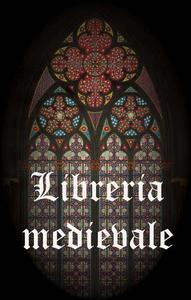The Silk Road: Key Papers. Part I: The Pre-Islamic Period
CODICE: ISBN 1906876231 EAN 9781906876234
AUTORE/CURATORE/ARTISTA :
Author: Valerie Hansen
EDITORE/PRODUTTORE : Brill
COLLANA/SERIE : Key Papers
DISPONIBILITA': In esaurimento
TITOLO/DENOMINAZIONE:
The Silk Road: Key Papers. Part I: The Pre-Islamic Period
PREZZO : EUR 419,00€
CODICE :
ISBN 1906876231
EAN 9781906876234
AUTORE/CURATORE/ARTISTA :
Author: Valerie Hansen
EDITORE/PRODUTTORE:
Brill
COLLANA/SERIE:
Key Papers
ANNO:
2011
DISPONIBILITA':
In esaurimento
CARATTERISTICHE TECNICHE:
2 vols
700 pages
Hardback
DESCRIZIONE:
Publisher's description:
This is the first of two collections by top scholars working on the history of the Silk Road. This collection’s main focus is the first millennium CE when the Silk Road trade was at its height. Most of the entries are organized chronologically and geographically, concentrating on the sites (like Niya and Loulan) which flourished in the third and fourth centuries, then Turfan and Samarkand (500-800), and closes with the period after 800, when Tang China withdrew its troops from the region and the local peoples reverted to a largely barter economy. Coverage ends in 1000, when the first cities on the western edge of the Taklamakan converted to Islam. Introductory texts provide general overviews of the trade (including classic pre- and post-war studies), followed by a brief survey of the ancient trade routes. Of particular interest in this collection are the Silk Road’s most famous group of travellers, the Sogdians, a people from the region of Samarkand (in today's Uzbekistan) thanks to Chinese archaeologists who have recently uncovered several tombs that allow us to see how the Sogdians gradually adjusted to Chinese culture, decorating their tombs with detailed scenes of everyday life.
Table of contents:
Introduction
SECTION I: The beginnings of the Silk Road
1. The Development of Trade Between The Roman Empire and the East Under Augustus
2. On the Question of Silk in pre-Han Eurasia
3. The Desert Crossing of Hsüan-Tsang, 630 A.D
4. Land route or sea route? Commentary on the study of the paths of transmission and areas in which Buddhism was disseminated during the Han period
SECTION II: The Kushan Empire and Beyond
5. La Vieille Route Reconsidered: Alternative Paths for Early Transmission of Buddhism Beyond the Borderlands of South Asia
6. New Light on Ancient Afghanistan: the decipherment of Bactrian
7. Life in Third-fourth Century Cad’ota: A Survey of Information gathered from the Prakrit documents found north of Minfeng (Niya)
8. Some Comments on Third-Century Shan-shan and the History of Buddhism
SECTION III: Kuche, Kumarajiva, and Broader Issues of Translation
9. Perspectives in the Study of Chinese Buddhism
10. India and China: Observations on Cultural Borrowing
11. On the Interrelationship of the Tocharian Dialects
12. The Position of Tocharian among the Other Indo-European Languages
SECTION IV: Samarkand and the Sogdians
13. The Sogdian merchants in China and India
14. The Self-Image of the Sogdians
15. Wall Paintings from a House with a Granary. Panjikent, 1st Quarter of the Eighth Century A.D.
16. New Work on the Sogdians, the most Important Traders on the Silk Road, A.D. 500-1000
17. The Migrations and Settlements of the Sogdians in the Northern Dynasties, Sui and Tang
SECTION V: Turfan
18. A Concise History of the Turfan Oasis and its Exploration
19. The Impact of the Silk Road Trade on a Local Community: The Turfan Oasis, 500-800
20. Women in Turfan During the Sixth to Eighth Centuries: A Look at their Activities Outside the Home
21. Textiles et tissus sur la route de la soie: eléments pour une géographie de la production et des échanges
22. Sasanian and Arab-Sasanian Silver Coins from Turfan: Their Relationship to International Trade and the Local Economy
23. Money in Eastern Central Asia before AD 800
SECTION VI: Dunhuang and Khotan
24. Multilingualism in Tun-huang
25. Silk Road or Paper Road
26. Tang
27. The Khotanese in Dunhuang
28. On the taxation system of pre-Islamic Khotan
29. The Nature of the Dunhuang Library Cave and the Reasons for Its Sealing
Index.
GENERE: Libri ,Saggi ,



